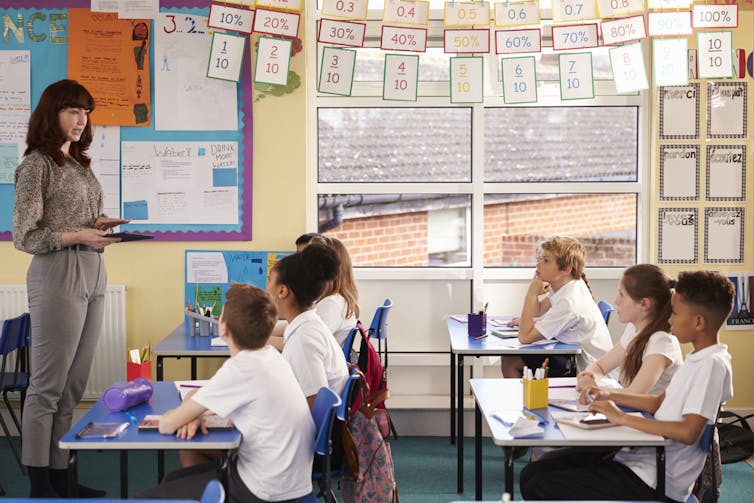More than 300 different languages are now spoken in British schools. And in England, over 20% of primary school children use English as an additional language.
This equates to over 900,000 children for whom English is not their first language. These children might have been born in another country, their parents might speak another language to them at home, or they might just know a few words of another language because their grandparents immigrated to England a long time ago. But just like any other pupil, they attend schools across the country, speak (or learn to speak) in English and participate in the national curriculum. Yet the fact these children also bring with them a rich understanding of another language and culture can often go unnoticed.
Bilingualism is something we usually celebrate in adults yet not always in the classroom, where English is usually prioritised. This is despite the fact that many communities in Britain, speak more than one language.
In the 2011 British Census, for example, 4.2m people reported having a main language other than English. And just over half of all Europeans claim to speak at least one other language in addition to their mother tongue.
Lack of linguistic diversity
Research shows that some children never have the opportunity to use their home language at school. And in some cases, their teachers might not even know they speak another language.
In the absence of school or community support, these children can sometimes end up losing their home languages. This is something that may be particularly true in highly monolingual areas which experience less immigration.
The problem then is that these areas – where English is the only language spoken – become even more monolingual. All while other areas of the country grow and celebrate their linguistic diversity.

Despite all the benefits that can come from having access to other languages, research shows there are a number of factors that may prevent teachers from feeling able to incorporate home languages into their classrooms. For example, there exists what has been described as a “monolingual mindset” whereby English schools have a long history of being monolingual and prioritising children’s progression in the English language. And promoting language learning in a country where a global language is spoken can be a hard sell.
Teachers are also under a lot of pressure to meet targets in English – just in the same way that pupils are under pressure to achieve in English. As a result, this can leave little room for individual variation, or for dedicating time to celebrate the linguistic diversity that exists within our schools.
How to create a multilingual community
Given that embracing other languages in school could be a great way of providing much needed linguistic and cultural education for the rest of the class, more could and should be done to make the most of these linguistic and cultural resources.
Even if a school doesn’t have any pupils using English as another language, chances are there are other languages being used in the wider community – and that could be utilised within local schools.

But this idea of children or parents taking control of the learning seems to be one that some teachers can feel uncomfortable with – as this means having to put their trust in the child and perhaps become the language learner themselves. Findings from our own research also show that significant investment would be required to give teachers the confidence and willingness to feel comfortable with this.
But investing in more multilingual classrooms could help to open new doors for all. And this could be as simple as a child reading stories in their home language to the rest of the class, or parents coming in to school to work with all the children using their language. Teachers could even widen the learning out to ask all the class to label parts of a flower (for example) in two languages, with the help of a bilingual child.
By using their languages in an “official” school environment, children would be able to see that there is a place for languages other than just English in school. And that their skills as a bilingual speaker are valued.
Recognising and encouraging bilingualism could also mean that monolingual children see positive examples of language learning. They would also hear the languages of their community and learn to appreciate linguistic diversity at a young age – vitally important in current climates of segregation and separation.

